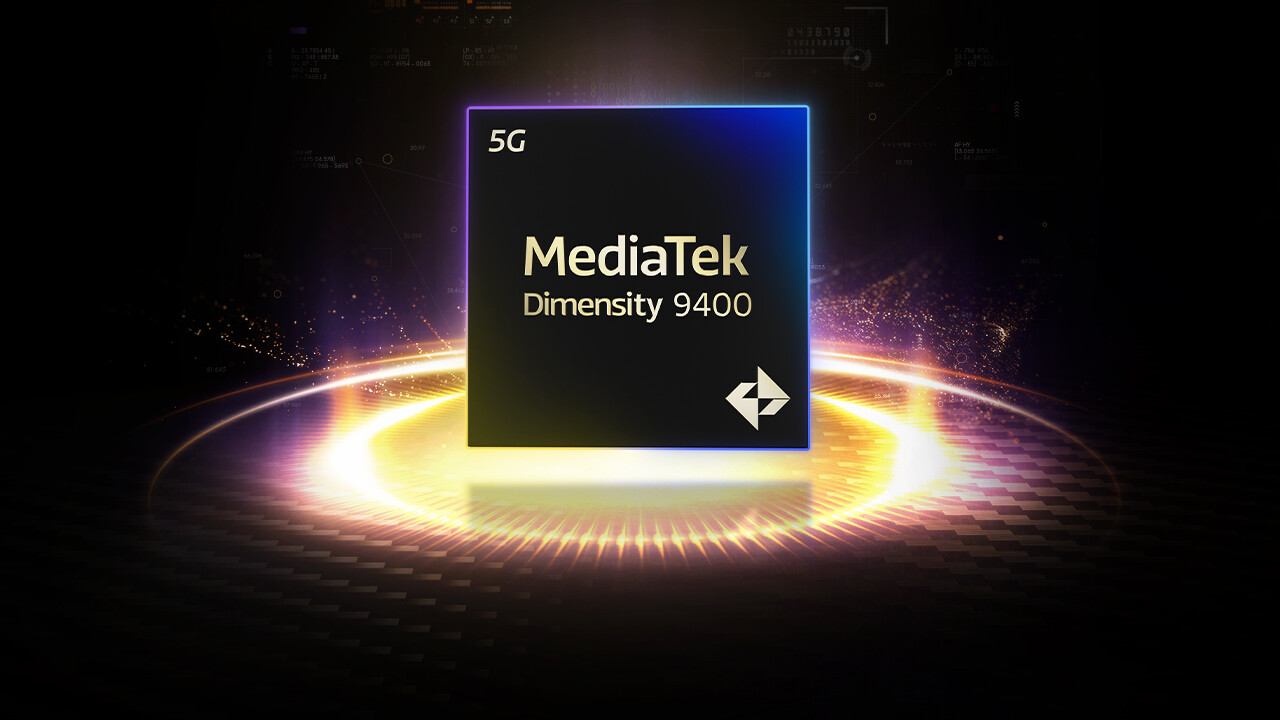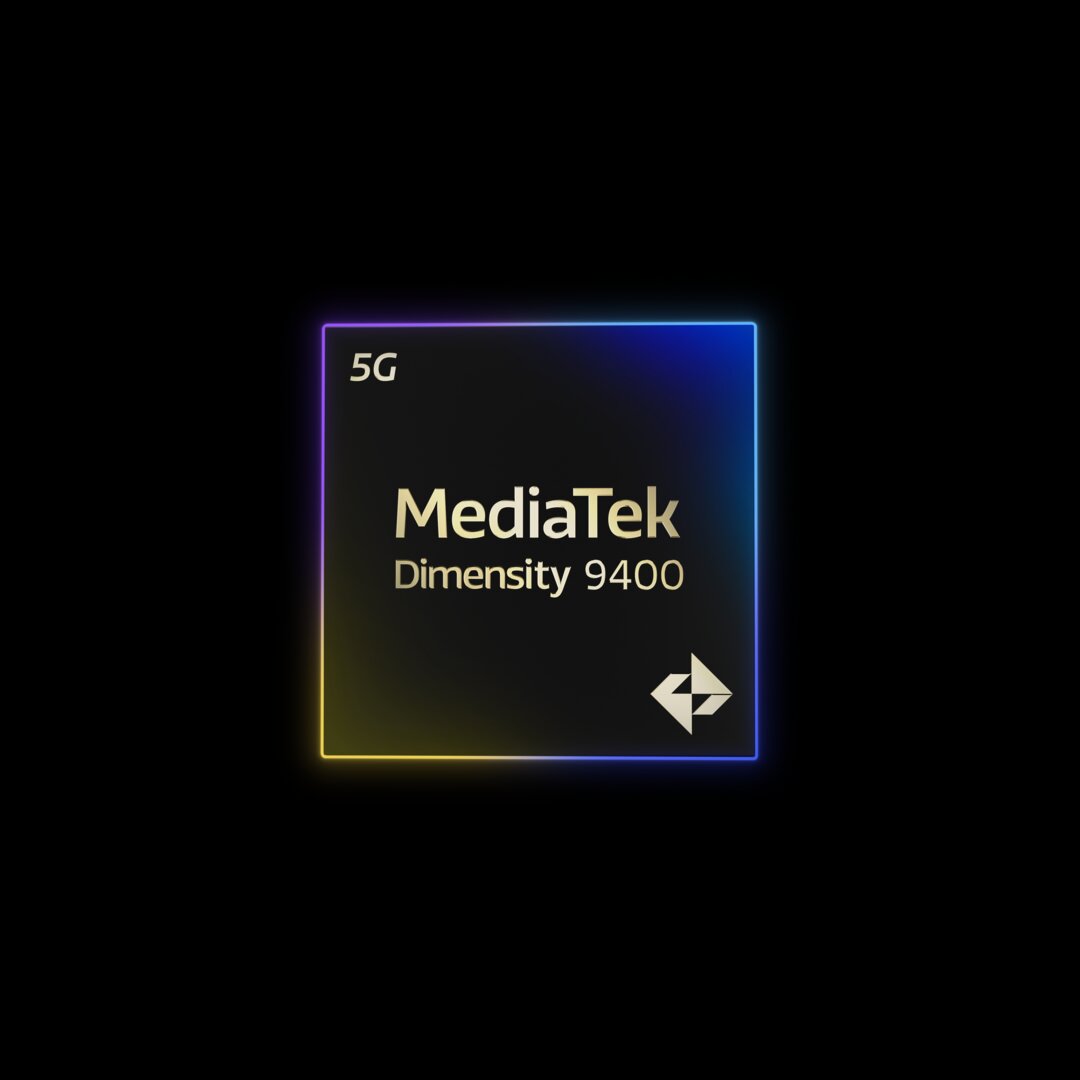MediaTek Dimensity 9400: High-end SoC from 3nm production uses large Arm cores 45 comments

Image: MediaTek
With the Dimensity 9400, MediaTek has introduced a high-end SoC for the best next-generation smartphones. The “All Big Core” design uses only large Arm cores for the CPU, including the new Cortex-X925. The new GPU is also ideal with the Immortalis-G925. The NPU is designed for generative AI.
TSMC N3E now also for MediaTek
The Dimensity 9400 is produced at TSMC in the second generation of 3nm manufacturing. The N3E production level was previously reserved for Apple’s A18 and A18 Pro. According to MediaTek, the first smartphones with the Dimensity 9400 will be presented and available in the current fourth quarter.
New Cortex-X925 as the main core
The flagship that follows the Dimensity 9000, 9200 and 9300 and their intermediate models is, like its direct predecessor, once again an “all-big-core” design that forgoes Arm’s real efficiency cores and instead uses performance cores. The Dimensity 9400 uses the Cortex-X925, introduced in May, as the main core with a clock frequency of up to 3.62 GHz. This is 220 MHz more than the improved Dimensity 9300+, which in turn offers 150 MHz more than the underlying Dimensity 9300. According to MediaTek, the single-threaded performance of the Dimensity 9400 is 35% higher than that of the Dimensity 9300.
MediaTek increases caches
According to the announcement, the chip also comes with “100% more L2 cache and 50% more L3 cache.” As MediaTek explained at the request of publishers, the L2 cache is 2 MB for the Cortex-X925 alone, 1 MB for each Cortex-X4 and 512 KB for each Cortex-A720. The L3 cache is 12MB and the design also has 10MB of SLC available. MediaTek does not disclose L1 cache.
 MediaTek Dimensity 9400 (Image: MediaTek)
MediaTek Dimensity 9400 (Image: MediaTek)
Cortex-X4 and A720 instead of real efficiency cores
Under the new main core, the Dimensity 9400 has three Cortex-X4s with performance cores of up to 3.3 GHz, i.e. actually main cores from the previous Arm generation, which were already installed in the Dimensity 9300 and there, main and efficient cores with different clock speeds were formed. All CPU cores used still correspond to the current ISA Armv9.2. The Dimensity 9400 still uses four Cortex-A720s up to 2.4 GHz as “E-cores”. Sustainable (sustained) multithreaded performance would be 28% higher. MediaTek has once again given up on the true A520 (refresh) efficiency cores. Regardless, the SoC should perform 40% more efficiently overall.
When interviewed by the editorial team, MediaTek explained that its own performance targets for single- and multi-threaded performance were achieved with the new single main core and the new lineup of remaining cores from the previous year. With the four Cortex-A720s as “E-cores”, they managed to deliver plenty of performance with high efficiency and will further optimize this approach with the Dimensity 9400.
Arm’s Large Ray Tracing GPU
For the GPU, MediaTek uses the latest solutions from Arm. The Immortalis-G925 is used in a configuration with 12 cores and up to 41% higher peak performance and 40% higher ray tracing performance with up to 44% lower consumption compared to its predecessor . This year’s May launch in-depth article provides background information on Arm’s new GPU architecture. Features supported by MediaTek include HyperEngine Super Resolution, which brings FSR-2-based temporal scaling to smartphones. MediaTek’s implementation is based on Arm Accuracy Super Resolution (Arm ASR). When questioned by the editorial team, MediaTek remained discreet on the GPU frequency.
 ASR arm (Image: Arm)
ASR arm (Image: Arm)
NPU for on-device video generation and AI training
As with any new innovation, the theme of AI plays a major role. MediaTek does not mention TOPS for the 8th generation NPU, but rather announces capabilities and performance data. These include 50 tokens/s for multimodal large language models (MLLM), double the performance for streaming models, e.g. when generating images, and 80% better performance for queries to large linguistic models. The Dimensity 9400 is the first mobile chip for LoRA training and video generation directly on the device. Low-Rank Adaptation (LoRA) training of large language models aims to efficiently fine-tune large language models pre-trained with a subset of model parameters with less storage and computational effort. Examples (not related to the Dimensity 9400) for AI video generation include OpenAI’s Sora or Adobe’s Firefly video model.
The Dimensity 9400 also integrates the Dimensity Agentic AI Engine (DAE), which aims to transform traditional AI applications into agentic AI applications that can pursue goals, make decisions, and act independently to some extent. MediaTek wants to provide developers with a unified interface for communicating between different AI agents as well as with third-party APKs and language models in order to run them efficiently both on-device and in the cloud.
New image processor records 4K60 more cost-effectively
A new image processor (ISP) for increasingly complex cameras is also part of the SoC with the Imagiq 1090. This supports HDR video recording with active zoom at all focal lengths of the smartphone and is said to be up to 14% more efficient when recording in 4K60. MediaTek is also installing a triple display serial interface (DSI) to prepare the chip for tri-fold devices like the Huawei Mate XT recently introduced in China. MediaTek is solving the audio problem with support for 24-bit/384kHz via Bluetooth as well as up to six microphones for 24-bit recordings.
 MediaTek Dimensity 9400 at a Glance (Image: MediaTek) Download
MediaTek Dimensity 9400 at a Glance (Image: MediaTek) Download
New Solutions for WiFi and 5G
Connectivity for Bluetooth and Wi-Fi 7 is provided by a 4nm WLAN/BT chip that is 50% more efficient and supports a raw data rate of up to 7.3 Gbps when in use of Wi-Fi 7. Qualcomm also uses WLAN/BT. separately from the SoC. Direct Bluetooth connections from one smartphone to another should be possible over a distance of up to 1.5 km. However, a new 5G Advanced modem is integrated directly into the SoC, designed to reach up to 7 Gbit/s by grouping four frequency blocks (4CA) in the spectrum below 6 GHz. MediaTek once again renounces mmWave technology, which is particularly relevant in the United States. The modem supports 5G and 4G with Dual SIM Dual Active (DSDA) and Dual Data in parallel on both cards.
Techconseil received information about this article from MediaTek under NDA. The only requirement was the earliest possible publication date.
Topics: Arm Artificial intelligence MediaTek processors Smartphones Tablets Source: MediaTek

Léa tests tablets for their performance, versatility, and ability to meet creative and professional needs.


